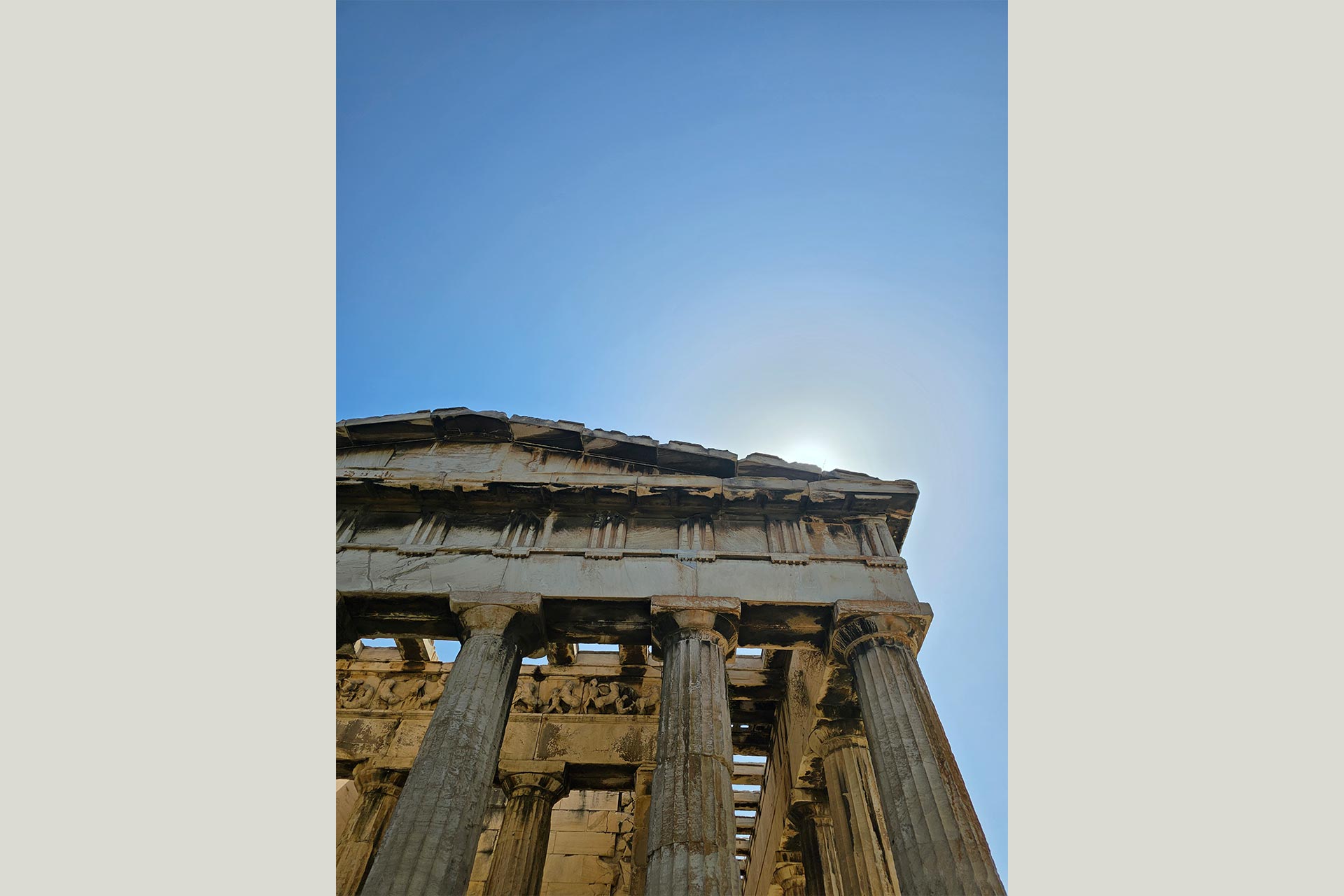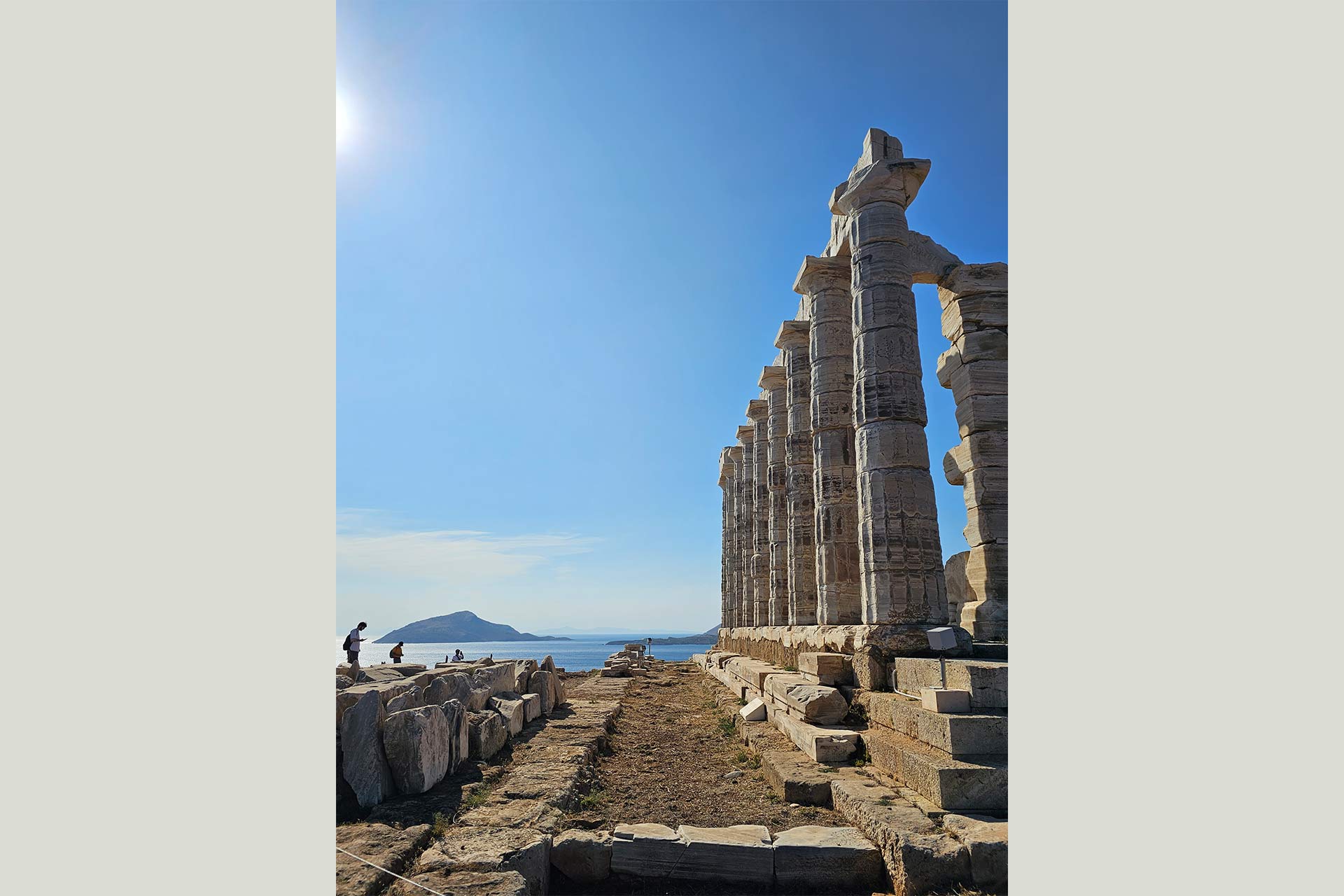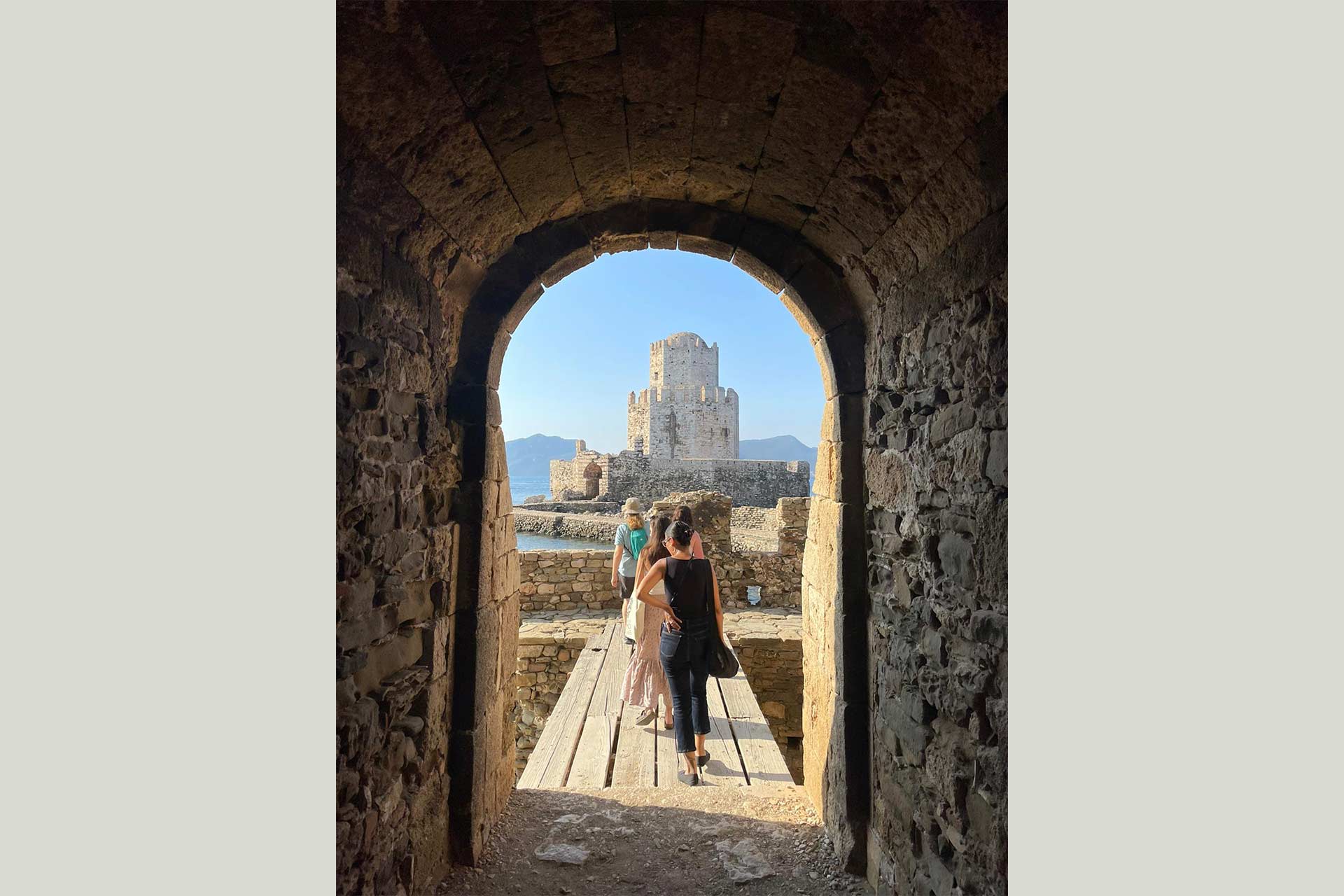
My three weeks at the British School at Athens were amongst the very best educational experiences of my life. Travelling throughout Attica and the Peloponnese with on-site lectures and behind-the-scenes peeks at the Parthenon was something I never thought I’d get the chance to participate in - and to have it all interspersed with evening swims in crystalline water and many many gyros was just a huge bonus, and an opportunity I could not be more grateful to have experienced.
I commenced my undergraduate degree after a 15-year break from education, and as such, most of my knowledge regarding classical civilisations was gathered by osmosis, hazy and ill-defined. My university education has helped me sharpen and piece together, but timelines have never been forte, and this course helped me to finally concretise historical chronology through direct contact with artefacts and sites spanning from the Prehistoric period to the first rumbles of the Renaissance.
Hephaestion:

I arrived in Greece with an itinerary peppered with little asterisks indicating days I was most looking forward to – Delphi and Mycenae coming high on the list. Little did I know I had so many surprises awaiting me, from the serenity of Mystras to the amazing panoramic views of the Temple of Poseidon at Sounion (featuring Lord Byron’s graffiti!), every day presented a new competitor for favourite site.
Sounion:

The question of how we represent the Classical world was constantly brought to the fore with lessons around museology, and the myriad styles we saw through our many museum visits. The Archaeological Museum of Eleusis was a highlight with its immersive soundscapes and lighting designed to echo the initiatory experience, as well as the beautiful Benaki Museum of Islamic Art, an amazing space which exposed me to an area of Greek history which I have had little contact with and produces so many considerations around national self-identification and what histories we choose emphasise in this endeavour. The latter also happened to be a stones-throw away from the Monastraki markets, where much of our free time was spent eating, cat-spotting and hunting for antiques.
As I study Classical Studies, my exposure to practical archaeology has been very limited, and through this course I learned about the technicalities of construction, got to grips with the specificity of monumental building aspects, and experienced so many diverse examples of anastylosis with all the questions which they provide around the methods and reasonings which drive restoration - from the modern examples at Epidauros and Messene to the many years of ancient recreation and repurpose at the Little Metropolis in Athens.
Messene:

Just being able to look at a floor plan and really envision the space is a huge foundational skill, and one which will be invaluable as I hope to go into heritage management and preservation after graduation. We also had a fun workshop where we learned to make squeezes, and a session in the archives where I pored over beautifully painted floor plans, and was thrilled to spot the same tiles in real life the following week, at the Osiou Louka Monastery.
The last week of the course was spent touring the Peloponnese, where we visited places such as Sparta, Methone, and Nestor’s Palace and climbed up to the beautiful Castle of Pylos overlooking the Bay of Navarino. We ended our trip in Olympia, where - my knees not being what they once were - I watched the rest of our group race at the iconic stadium, providing the most fitting ending to our Panhellenic tour through history.
The view from Castle of Pylos:

I would like to thank everybody who made this most extraordinary experience possible. The staff and tutors at the BSA, Dr Zali-Schiel for supporting me in my application, Dr Fitzjohn for supporting me in my application for funding, and to the Chris Mee fund financers who provided the support without which I would never have been able to take advantage of this opportunity.